
News |
- Obama Says No to Keystone XL Pipieline
- Environmental Charity Threatened
- Bloodvein Pimitotah Land Management Plan
- East Side UNESCO Bid Submitted
- Minister Calls Citizens and First Nations "Radicals"
- Manitoba Pressured Over Peat Mining
- Peat Mine Comments Deadline Extended
- Wahgoshig Win Injunction
- Polar Bear Submission Filed With CEC
- Public Safety Risk Increasing
- Manitoba Ombudsman Scolds Manitoba Water Stewardship
- Peat Mines Proposed Despite New Law
| Obama Says No to Keystone XL Pipieline | 25 January 12 |
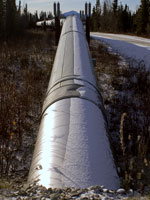 President Obama has stopped the Keystone XL pipeline. The pipeline would have stretched 1700 miles from the Tar Sands in Alberta to the Gulf of Mexico. After Congressional Republicans forced a decision upon the U.S. State Department, President Obama denied a permit for the contentious pipeline. In a statement the President cited the forced deicison on the permit failed to provide enough time for a proper assessment of the impacts the Keystone XL Pipeline could and would have on the environment, job creation and issues of security.
President Obama has stopped the Keystone XL pipeline. The pipeline would have stretched 1700 miles from the Tar Sands in Alberta to the Gulf of Mexico. After Congressional Republicans forced a decision upon the U.S. State Department, President Obama denied a permit for the contentious pipeline. In a statement the President cited the forced deicison on the permit failed to provide enough time for a proper assessment of the impacts the Keystone XL Pipeline could and would have on the environment, job creation and issues of security.As writer and Keystone XL protest leader Bill McKibben wrote, "This isn't just the right call, it's the brave call." A huge victory for environmental groups across North America who have been working on promoting awareness of the risks, and alternatives to Big Oil. While the Oil Industry is not likely to back down from building more pipelines, this is a good indication that the strength of the Public's Voice can be heard and does make a difference. View January 19, 2012 Huffington Post articleView September 22, 2011 The Pembina Institute article View January 20, 2012 Nation of Change article View January 18, 2012 Financial Post Energy article View January 25, 2012 Digital Journal article Source:
|
|
 Print version Print version |
Top |
| Environmental Charity Threatened | 25 January 12 |
 On January 23 former ForestEthics employee Andrew Frank went public with an affidavit outlining allegations that the Prime Minister's office in Canada threatened the funding of ForestEthics. The affidavit alleges that the Prime Minister's Office had repeated contact with Tides Canada, a main funder of ForestEthics, in an effort to end funding for Forest Ethics.
On January 23 former ForestEthics employee Andrew Frank went public with an affidavit outlining allegations that the Prime Minister's office in Canada threatened the funding of ForestEthics. The affidavit alleges that the Prime Minister's Office had repeated contact with Tides Canada, a main funder of ForestEthics, in an effort to end funding for Forest Ethics.The affidavit alleges that the Prime Minister's Office made an attempt to influence the charitable funding of ForestEthics Canada. According to the affidavit, the Prime Minister's Office informed Tides Canada CEO, Ross McMillan, that it considers ForestEthics to be an 'enemy of the government of Canada' and that unless Tides Canada alters its charitable support of ForestEthics, there will be consequences. ForestEthics conducts public information campaigns regarding the Enbridge pipeline, and oil sands in Alberta, including to get U.S. companies and cities to avoid and/or stop using oil generated from Alberta oil sands projects. ForestEthics also is involved in efforts to sign up presenters at the National Energy Board's review of the proposed Enbridge pipeline from Alberta to the British Columbia coast. So far more than 4,000 people have signed up to present to the review board. Spokesman for the Prime Minister's office, Andrew MacDougall, has denied the allegations. View January 24, 2012 The Canadian Press articleView January 25, 2012 Huffington Post article View January 24, 2012 CBC News article View A Whistleblower's Open Letter to the Citizens of Canada View ForestEthics website View January 24, 2012 Toronto Star article View January 24, 2012 Forest Ethics Press Release View Tides Canada web site Source:
|
|
 Print version Print version |
Top |
| Bloodvein Pimitotah Land Management Plan | 25 January 12 |
 Regulations required to establish Bloodvein First Nation Pimitotah Lands Management Plan and planning area were established December 10, 2011 and amended December 24, 2011.
Regulations required to establish Bloodvein First Nation Pimitotah Lands Management Plan and planning area were established December 10, 2011 and amended December 24, 2011.Although the entire area is 3,914 square kilometres (391, 400 hectares) only 1,326 square-kilometres (132,600 hectares) of newly protected land is created through establishment of Kichinatagon Special Management Zone, where industrial development, including logging, mining and development of oil, gas, and hydroelectric facilities is prohibited. The draft Pimitotah Lands Management Plan was posted June 28, 2011 and open for comments until August 23rd, 2012. Although comments were solicited and the plan apparently updated from the draft version filed in June 2011, Manitoba Wildlands was unable to find a record of any comments received or which changes made to the draft lands plan. "This lack of access to information shows we need a real public registry under the East Side Traditional Lands Planning and Special Protected Act," said Manitoba Wildlands director Gaile Whelan Enns. View January 11, 2012 Government of Manitoba press releaseView January 11, 2012 Winnipeg Free Press article View December 10, 2011 Pimitotah Traditional Use Planning Area Regulation (PDF) View December 24, 2011 Pimitotah Traditional Use Planning Area Regulation, amendment (PDF) View July 16, 2011 Manitoba Wildlands news item View June 24, 2011 Bloodvein draft Pimitotah Land Management Plan (PDF) View Manitoba Wildlands Protected Areas/Park Reviews Page View Manitoba Wildlands Protected Areas Announcements page Source:
Government of Manitoba
|
|
 Print version Print version |
Top |
| East Side UNESCO Bid Submitted | 25 January 12 |
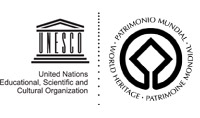 Manitoba Premier Greg Selinger announced January 18, 2012 that the nomination package to have a vast boreal area east of Lake Winnipeg designated a United Nations Educational, Scientific and Cultural Organization (UNESCO) World Heritage Site (WHS) is complete.
Manitoba Premier Greg Selinger announced January 18, 2012 that the nomination package to have a vast boreal area east of Lake Winnipeg designated a United Nations Educational, Scientific and Cultural Organization (UNESCO) World Heritage Site (WHS) is complete.The decision making process generally takes 18 months, as UNESCO officials consider the natural and cultural value of site. Known as Pimachiowin Aki — Ojibway for "the land that gives life" — the nominated area encompasses 33,400 square kilometres of boreal forest, rivers, lakes and wetlands spread across eastern Manitoba and into Ontario. The nominated WHS includes Atikaki Provincial Park in Manitoba and Woodland Caribou Provincial Park in Ontario. Five First Nations started the designation bid in 2002 and will manage the lands with the Governments of Ontario and Manitoba. The five First Nations entered into an accord in 2002, which called for establishment of the WHS. "What it means for Manitobans is that we are going to be globally recognized for what we have done to protect this site," said Manitoba Premier Greg Selinger. "It is Manitoba and Ontario's responsibility to design and protect these WHS lands. Road-building, mining and forestry operations will be allowed inside some areas of the proposed WHS, so it is not yet clear how much of the entire area will be protected," noted Manitoba Wildlands Director Gaile Whelan Enns. If the bid is successful, the region would join other UNESCO world heritage sites such as Australia's Great Barrier Reef, Arizona's Grand Canyon and Canada's Banff National Park. View January 19, 2012 Winnipeg Free Press articleView January 19, 2012 Winnipeg Sun article View January 18, 2012 Government of Manitoba News Release View Pimachiowin Aki World Heritage Project website View UNESCO World Heritage Centre website View Manitoba Wildlands Manitoba World Heritage Site page Source:
CBC, Government of Manitoba
|
|
 Print version Print version |
Top |
| Minister Calls Citizens and First Nations "Radicals" | 13 January 12 |
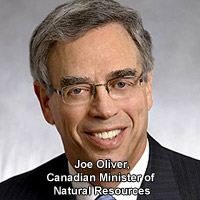 The Canadian joint review panel (JRP) hearings, on whether to approve the Enbridge Northern Gateway pipeline, which would deliver crude from Alberta's oilsands to Kitimat, British Columbia (B.C.), for shipment to Asia, began January 10, 2012. More than 4,300 people signed up to address the joint review panel regarding the proposed pipeline. The hearing process is expected to take 18 months.
The Canadian joint review panel (JRP) hearings, on whether to approve the Enbridge Northern Gateway pipeline, which would deliver crude from Alberta's oilsands to Kitimat, British Columbia (B.C.), for shipment to Asia, began January 10, 2012. More than 4,300 people signed up to address the joint review panel regarding the proposed pipeline. The hearing process is expected to take 18 months.One day before the JRP hearing were set to begin Canada's Natural Resources Minister Joe Oliver released an open letter which claimed foreign and radical groups "threaten to hijack our regulatory system to achieve their radical ideological agenda," stack the hearings with people to delay or kill "good projects," attract "jet-setting" celebrities and use funding from "foreign special interest groups." "Just because a lot of people want to talk, it doesn't mean the process is broken. In fact, a lot of people would say the opposite," said Gerald Butts, president and CEO of WWF Canada. Dene National Chief Bill Erasmus said that Minister Oliver's open-letter "pits people against each other. The federal government should be brining people together. That should be the focus." View January 12, 2012 Aboriginal Peoples Television Network (APTN) articleView January 9, 2012 Open-letter from Joe Oliver, Canada Minister of Natural Resources View January 9, 2012 Open-letter from Elizabeth May, Canadian Green Party Leader View January 9, 2012 Open-letter from John Bennett, Executive Director Sierra Club Canada View January 9, 2012 CBC News article View January 6, 2012, January 9, 2012, January 9, 2012 Globe and Mail articles View more on Manitoba Wildlands Energy Development page Source:
Globe and Mail & APTN
|
|
 Print version Print version |
Top |
| Manitoba Pressured Over Peat Mining | 13 January 12 |
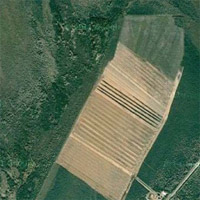 Public Pressure is building for the Manitoba Government to honour the spirit of its own laws and stop the rapid expansion of the peat industry, following the outcry over a proposed peat extraction project inside a provincial park.
Public Pressure is building for the Manitoba Government to honour the spirit of its own laws and stop the rapid expansion of the peat industry, following the outcry over a proposed peat extraction project inside a provincial park.Sun Gro Canada has applied for an Environment Act license for the proposed "Hay Point Peat Mine Development (Public Registry file #5548.00)" inside Hecla / Grindstone Provincial Park. The proposed peat extraction project has not been approved and the public is being encouraged to submit comments to Darell Ouimet (darrell.ouimet[at]gov.mb.ca) at the Environmental Assessment and Licensing Branch (EALB). EALB is required to consider the comments received when making a licensing decision. Comments must be submitted by February 3, 2012 and include a reference to Public Registry file #5548.00, Hay Point Peat Mine Development." Yet the licensing process is still moving forward despite: 1) a new law, The Save Lake Winnipeg Act, enacted June 2011 that the Manitoba Government claimed would stop rapid expansion of the peat industry in Manitoba; and 2) concerns raised by Manitoba Conservation Parks & Natural Areas branch that the proposed peat mine at Hecla/Grindstone Provincial Park could pose a fire risk for cottagers, damage the park's only road and harm habitat for Manitoba's dwindling moose population. According to information obtained by Manitoba Wildlands from the Manitoba Government, 184 peat quarry leases have been granted in Manitoba meaning that more than 30,000 hectares peat lands could potentially be subject to peat mining  almost twice as much as the 17,000 hectares of peat land currently in production across Canada. View January 6, 2012, January 10, 2012, January 12, 2012 Winnipeg Free Press articlesView January 11, 2012 Interlake Spectator article View January 10, 2012 CBC News article View Wilderness Committee, Write Wild - Provincial Park Threatened by Peat Mining Operation View Sun Gro Horticulture Canada Ltd. - Hay Point Peat Mine Development (PR file #5548.00) Environmental Assessment Proposal (PDF) View Manitoba Wildlands Reality Check #32  How Many Peat Leases in Manitoba? View December 30, 2011 Manitoba Wildlands news item View January 6, 2012 Manitoba Wildlands previous news item View Manitoba Wildlands Peat Mining in Manitoba page Source:
Winnipeg Free Press, Government of Manitoba
|
|
 Print version Print version |
Top |
| Peat Mine Comments Deadline Extended | 6 January 12 |
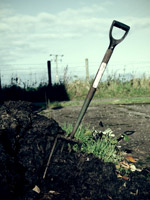 The comments deadline for an environmental proposal to mine peat inside Hecla / Grindstone Provincial Park has been extended till February 3, 2012. The previous deadline, as reported December 30, 2011 by Manitoba Wildlands, was January 16, 2011.
The comments deadline for an environmental proposal to mine peat inside Hecla / Grindstone Provincial Park has been extended till February 3, 2012. The previous deadline, as reported December 30, 2011 by Manitoba Wildlands, was January 16, 2011.Peatlands act as important water filters, reducing harmful nutrients that enter the lake. Peat bogs also serve as important carbon sinks, and mining them releases both carbon and methane into the atmosphere. "Peat mining has the distinction of disrupting water tables, removing our natural water filtration, and releasing vast stores of carbon. ... Peat bogs, then, are an essential climate change mitigation tool," said Manitoba Wilderness Committee Campaign Director Eric Reder. Cottagers and permanent residents in Hecla/Grindstone park are also concerned by the proposed mine. "It will leave a permanent scar in that area -- at least permanent within my generation for sure," said Heather Hinam, who owns a home in Hecla park. There are 201 quarry leases for peat in all of Manitoba. Most are clustered in the Interlake and southeastern Manitoba. Several are near Lake Winnipeg. In June, the province announced it was "banning the rapid expansion of peat extraction from wetlands" as part of its Save Lake Winnipeg Act. But all the government did was place a hold on granting new leases to peat producers. Those holding existing leases accelerated their environmental license applications. "Why are we mining in parks? Why would we want to do anything other than abide by the intent of the Save Lake Winnipeg Act?" said Manitoba Wildlands Director Gaile Whelan Enns. Chloe Burgess, manager of sustainable resource policy with Manitoba Conservation, said the province is developing a peatland-management strategy. The government plans to solicit input from the public in late February, 2012. View January 6, 2012 Winnipeg Free Press articleView December 30, 2011 Manitoba Wildlands news item View January 5, 2012 Wilderness Committee blog post View Wilderness Committee Map of Peat Leases incise Hecla /Grindstone Provincial Park View October 2011, Sun Gro Horticulture Canada Ltd. - Hay Point Peat Mine Development Manitoba Environment Act Proposal (Public Registry File # 5548.00) View Manitoba Wildlands Peat Mining in Manitoba page Source:
Wilderness Committee, Manitoba Wildlands, Winnipeg Free Press
|
|
 Print version Print version |
Top |
| Wahgoshig Win Injunction | 6 January 12 |
 A northeastern Ontario First Nation, Wahgoshig First Nation, has won an injunction to temporarily prevent junior mining company Solid Gold Resources from drilling on their traditional lands.
A northeastern Ontario First Nation, Wahgoshig First Nation, has won an injunction to temporarily prevent junior mining company Solid Gold Resources from drilling on their traditional lands.In a January 3, 2012 Ontario Superior Court decision, Justice Carole Brown ordered Solid Gold Resources to stop drilling for 120 days while the company and the Ontario government pay for a third party mediator to begin a consultation process with Wahgoshig First Nation. Brown found that the company made a "willful effort not to consult" with the community despite provincial requests since 2009. The provincial government even offered to "facilitate the process" for Solid Gold. Wahgoshig hunters came across the company's drilling crew in the spring of 2011, and the workers refused to reveal the name of their employer. The area in which Solid Gold Resources was drilling contains ancient burial grounds and many sacred sites. Wahgoshig band officials managed to find out Solid Gold was the company behind the drilling. They attempted to initiate contact with Solid Gold, but receiving no response they applied for the injunction. "We are very pleased with this decision. We feel that justice has been done," said Wahgoshig Chief David Babin. View January 3, 2012 Superior Court of Ontario DecisionView January 4, 2012 Olthuis, Kleer, Townshend (OKT) LLP blog post View January 4, 2012 Mining Watch Canada article View January 4, 2012 Aboriginal Peoples Television Network (APTN) article View January 5, 2012 Winnipeg Free Press article View January 6, 2012 Northern Ontario Business article View Manitoba Wildlands Aboriginal Court Cases & Consultations page |
|
 Print version Print version |
Top |
| Polar Bear Submission Filed With CEC | 6 January 12 |
 The Commission for Environmental Cooperation (CEC) under NAFTA received a citizen submission from Center for Biological Diversity (CBD) November 30, 2011. The CBD asserts that Canada is failing to effectively enforce Canada's Species at Risk Act (SARA) and "denying the [Polar] bear any substantive legal protections under SARA."
The Commission for Environmental Cooperation (CEC) under NAFTA received a citizen submission from Center for Biological Diversity (CBD) November 30, 2011. The CBD asserts that Canada is failing to effectively enforce Canada's Species at Risk Act (SARA) and "denying the [Polar] bear any substantive legal protections under SARA.""Canada is willfully ignoring the deep trouble that polar bears are already in and the likely extinction they face without rapid cuts in greenhouse emissions. Time is running out for the world's polar bears. They deserve real protection," said Kassie Siegel, director of the CBD's Climate Law Institute Siegel was instrumental in a winning a ruling to have polar bears listed as threatened under the U.S. Endangered Species Act June 2011. Her attention has now turned to Canada. Canada's polar bear population makes up about 60% of the world's total population of 20,000 to 25,000 individuals. Canada completed its long-overdue assessment of the status of polar bears under SARA November 2011. Instead of listing the imperiled bears as "threatened" or "endangered," the government designated the bears as a "species of special concern," which affords no substantive protections. "Had Canada fully complied with SARA, the polar bear would have been listed as endangered two and a half years ago, and the species would be protected by a recovery strategy and have identified critical habitat by now," claims CBD. The CEC Secretariat is reviewing the submission to determine whether it meets the criteria for submissions set out in Article 14 of the North American Agreement on Environmental Cooperation (NAAEC). Upon instruction from the CEC Council, the CEC Secretariat may examine a submission further and develop a factual record. View January 3, 2011 Environmental Law and Litigation articleView December 8, 2011 Commission for Environmental Cooperation release View December 5, 2011 Centre for Biological Diversity (CBD) Petition View November 30, 2011 Centre for Biological Diversity (CBD) press release View Manitoba Wildlands Biodiversity & Species page Source:
Commission for Environmental Cooperation, Centre for Biological Diversity
|
|
 Print version Print version |
Top |
| Public Safety Risk Increasing | 6 January 12 |
 The public safety of Canadians is increasingly at risk because the government is failing to monitor and enforce its regulations on dangerous goods and decades-old oil and gas pipelines. Worse yet the Canadian Government refuses to accept its environmental enforcement is inadequate and poorly managed, warns Canada's Environmental Commissioner Scott Vaughn in a December 13, 2011 annual report.
The public safety of Canadians is increasingly at risk because the government is failing to monitor and enforce its regulations on dangerous goods and decades-old oil and gas pipelines. Worse yet the Canadian Government refuses to accept its environmental enforcement is inadequate and poorly managed, warns Canada's Environmental Commissioner Scott Vaughn in a December 13, 2011 annual report.The report follows a December 12, 2011 Ecojustice report showing the Canadian government is jeopardizing Canadians' health and the environment by failing to enforce its own environmental laws. Environmental groups are pleased the Commissioner of the Environment and Sustainable Development (CESD)'s report emphasizes the importance of transparency and accountability, and the need to better integrate scientific knowledge into federal decision making. "Today, the Commissioner made the point that effective governance requires a two-way exchange between government and its partners based on meaningful public participation," says Olivier Kolmel, chair of the Canadian Environmental Network. The Canadian Environmental Network previously coordinated consultations on environmental issues for the Canadian Government for more than 30 years, but funding for the Network was suddenly slashed October 2011 without notice. The Canadian Government claims it is moving towards web-based consultation. "The web-based consultation system that this government is implementing is just one tool in the consultation tool kit and should not replace face-to-face and other important forms of dialogue," said Kolmel. View December 14, 2011 Canadian Environmental Network (RCEN) release (PDF)View December 14, 2011 Montreal Gazette article View December 14, 2011 Reuters article View December 13, 2011 Report of the Commissioner of the Environment and Sustainable Development (PDF) View December 13, 2011 Office of the Auditor General of Canada release View December 12, 2011 Ecojustice release View December 12, 2011 Ecojustice report Source:
Canadian Environmental Network, Canada Commissioner of the Environment and Sustainable Development, EcoJustice
|
|
 Print version Print version |
Top |
| Manitoba Ombudsman Scolds Manitoba Water Stewardship | 30 December 11 |
 Manitoba Ombudsman has released an investigative report and recommendations regarding Manitoba Water Stewardships failure to comply with the Freedom of Information and Protection of Privacy Act (FIPPA).
Manitoba Ombudsman has released an investigative report and recommendations regarding Manitoba Water Stewardships failure to comply with the Freedom of Information and Protection of Privacy Act (FIPPA).FIPPA requests were made to Water Stewardship February 2011 for records related to: establishment and operation of the Fairford Water Control Structure and/or the Assiniboine Diversion from the 1960s to present; and respecting flooding of Lake St. Martin. Under FIPPA the public body has 30 days to respond to a FIPPA request. After no response by August 2011 a complaint was filed with the Manitoba Ombudsman. The Ombudsman found that Manitoba Water Stewardship failed to respond within the time period required under FIPPA. The Ombudsman also found that the department failed in its duty to assist an applicant by not responding openly, completely and without delay. Three recommendations were made to the department, all of which were accepted. Water Stewardship is now working to provide the information. Lake St. Martin First Nation has experienced repeated severe flooding, and in 2011 the whole community remains evacuated. View December 28, 2011 Manitoba Ombudsman News Release (PDF)View December 28, 2011 Manitoba Ombudsman Report (PDF) View December 28, 2011 Winnipeg Free Press article View December 28, 2011 CTV News article View December 28, 2011 CJOB coverage Source:
Manitoba Ombudsman
|
|
 Print version Print version |
Top |
| Peat Mines Proposed Despite New Law | 30 December 11 |
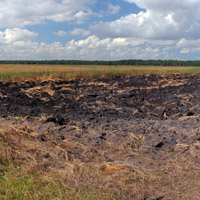 On November 1, 2011 Manitoba Conservation Environmental Assessment & Licensing Branch (EALB) received a new proposal from Sun Gro Horticulture Canada Ltd. for an Environment Act license to harvest peat inside Hecla/Grindstone Provincial Park. The approximately 531 ha targeted peatland is located approximately 21 km northeast of Riverton, MB. Public comments will be accepted until January 16, 2012.
On November 1, 2011 Manitoba Conservation Environmental Assessment & Licensing Branch (EALB) received a new proposal from Sun Gro Horticulture Canada Ltd. for an Environment Act license to harvest peat inside Hecla/Grindstone Provincial Park. The approximately 531 ha targeted peatland is located approximately 21 km northeast of Riverton, MB. Public comments will be accepted until January 16, 2012.The Government of Manitoba enacted Save Lake Winnipeg Act June 16 2011, which placed a two-year moratorium on the granting of quarry licences and quarry permits for peat and peat moss under Manitoba's Mines and Minerals Act. Three Environment Act licenses for peat mines have been granted in Manitoba since passage of Save Lake Winnipeg Act on June 16, 2011. The current Sun Gro application and review is the first time an Environment Act license has been requested following the passage of Save Lake Winnipeg Act. "Potentially permitting peat mines inside a provincial park, less than six months after a moratorium on new peat quarry licenses and permits, is contradictory to the aims of Save Lake Winnipeg Act. How many other peat mines could become operational in Manitoba on the basis of historical Mines and Minerals Act licenses and permits?" questioned Manitoba Wildlands Director Gaile Whelan Enns. View December 28, 2011 Manitoba Conservation Proposals Open for Public CommentView Sun Gro Horticulture Canada Ltd. - Ramsay Point Peat Mine Development License and Summary View Jiffy Canada Inc. - Peat Mining Development (Poplar Creek Bog, Haute Bog and Boggy River Bog) License and Summary View Berger Peat Moss Ltd. - Deer Lake Harvesting Development License and Summary View Manitoba Save Lake Winnipeg Act View Manitoba Wildlands, Lake Winnipeg page View Manitoba Wildlands Peat Mining in Manitoba page |
|
 Print version Print version |
Top |


 RSS Feeds:
RSS Feeds: